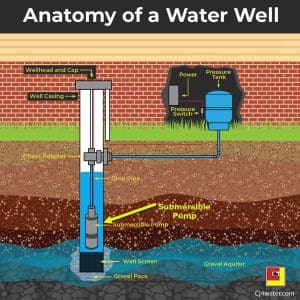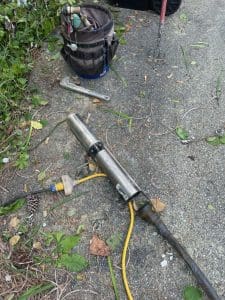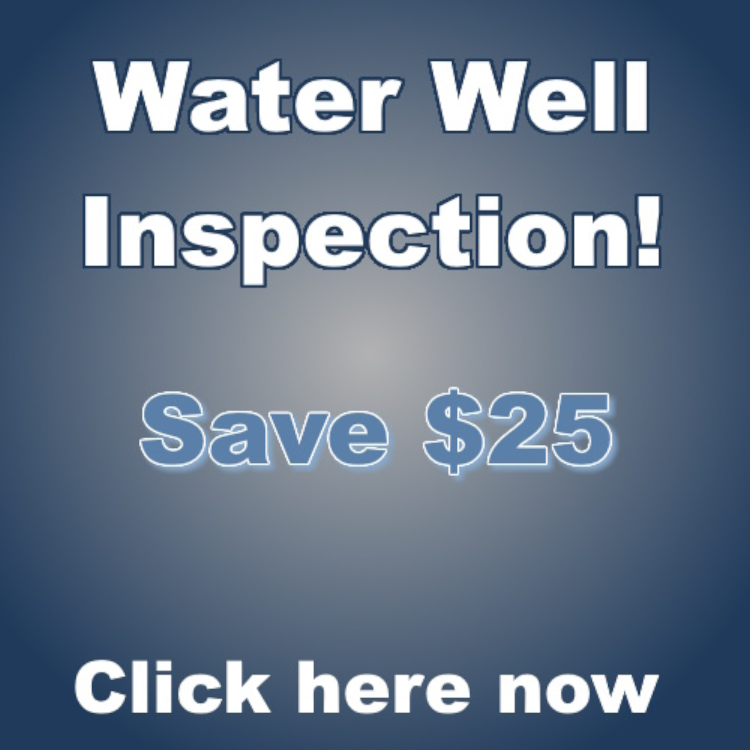 Did you know that submersible well pumps can push water up from depths of over 400 feet? Understanding submersible well pumps is crucial for efficient water supply in homes, farms, and industries. These sophisticated sub-pumps operate quietly and are ideal for deep wells. Their submerged design makes centrifugal well pumps less prone to pump cavitation issues. Learn about the benefits, installation process, maintenance tips, and factors when choosing a submersible well pump. Enhance your knowledge to ensure a reliable and consistent water flow.
Did you know that submersible well pumps can push water up from depths of over 400 feet? Understanding submersible well pumps is crucial for efficient water supply in homes, farms, and industries. These sophisticated sub-pumps operate quietly and are ideal for deep wells. Their submerged design makes centrifugal well pumps less prone to pump cavitation issues. Learn about the benefits, installation process, maintenance tips, and factors when choosing a submersible well pump. Enhance your knowledge to ensure a reliable and consistent water flow.
Key Takeaways
- Regular maintenance is critical: Ensure your submersible well pump is well-maintained to prolong its lifespan and prevent costly repairs.
- Choose the right size: Properly size your pump based on your water needs and well specifications to ensure optimal performance.
- Understand the operating principles: Knowing how submersible well pumps work can help you troubleshoot and operate issues efficiently.
- Consider energy efficiency: Submersible well pumps are often more energy-efficient than other pump types, saving you money in the long run.
- Follow selection guidelines: Use a selection and sizing guide to pick the most suitable pump for your well to avoid underperformance or overloading.
- Invest in quality: When selecting a submersible well pump, opt for reputable brands and quality materials to ensure reliability and durability.
Basics of Submersible Well Pumps
How They Work
Submersible well pumps operate by utilizing a hermetically sealed motor to drive an impeller. The impeller draws water from below the ground and pushes it to the surface, enabling efficient water delivery from deep within the earth.
These pumps push water upwards through several stages, allowing adequate water transportation to the surface. The hermetically sealed submersible pump motor plays a crucial role in powering the impeller, facilitating water movement from the well’s depths.
Types Available
Shallow-well and deep-well submersible pumps differ in their applications, with shallow-well pumps ideal for shorter distances and deep-well pumps suitable for greater depths. The design variances between these two types cater to various well depths and water extraction requirements.
When selecting a submersible pump, considerations such as well yield and household water needs are pivotal in determining whether a shallow or deep well pump is more suitable. Understanding these distinctions ensures optimal performance based on specific usage scenarios.
Key Components
The key components of a submersible well pump system include the motor, impeller, intake screen, and pumping unit. Each component is vital in water delivery, ensuring efficient water extraction and supply for residential or commercial use.
An essential component is the submerged pumping unit, which raises water from the well to the surface. This unit works with other elements to facilitate seamless water flow and consistent delivery to meet varying consumption demands.
Advantages Of Surface Pumps
Due to their submerged installation, submersible pumps offer superior reliability to above-ground pumps. They reduce exposure to external elements that can affect performance, and they have longer lifespans and minimal maintenance requirements. Thus, they provide cost-effective and reliable water supply solutions.
These pumps also mitigate cavitation issues commonly experienced by above-ground pumps, ensuring consistent operation without disruptions caused by air bubbles forming within the system.
Operating Principles
Water Lifting Mechanism
Submersible pumps operate by pushing water to the surface using a series of impellers and diffusers. The impellers spin rapidly, creating a centrifugal force that propels water upwards. This mechanism allows submersible pumps to efficiently lift water from deep underground wells, ensuring a constant and reliable water supply for various applications.
- Efficient lifting mechanism
- Consistent water delivery
- Reduced maintenance needs
Power Source and Consumption
Submersible well pumps typically run on electricity, requiring a continuous power supply. They are known for their energy efficiency compared to above-ground pumps, as they eliminate the need for priming and reduce energy loss during water transportation. Submersible pumps efficiently convert power into water flow, making them cost-effective and environmentally friendly options for water delivery systems.
- Lower energy consumption
- Reduced operational costs
- Eco-friendly power conversion
Pressure and Flow Dynamics
Submersible well pump systems regulate pressure and flow dynamics to ensure optimal performance. Operators can control the system’s pressure and flow rate by adjusting the pump speed and impeller size. Maintaining the right balance between pressure and flow is crucial for maximizing pump efficiency and achieving consistent water delivery.
- Controlled pressure management
- Enhanced flow rate adjustment
- Optimal system performance
Comparison With Other Pump Types
Efficiency Factors
Submersible well pumps stand out due to their high efficiency, which is influenced by several vital factors. Proper sizing of the pump accordingly.

1 HP Submersible Well Pump
to the well’s depth and water flow rate is crucial. Installation depth also plays a significant role in maximizing efficiency. Regular maintenance ensures optimal performance over time.
Installation Differences
When installing submersible well pumps, the pump is placed inside the well itself. This differs from above-ground pumps that are installed externally. Professional installation is essential for submersible pumps to function efficiently and prevent issues such as clogging or overheating.
Maintenance Requirements
Maintaining submersible well pumps involves checking for leaks, cleaning filters, and inspecting electrical components. Preventive maintenance, such as regular inspections and lubrication, extends the pump’s lifespan. Timely maintenance can effectively address common issues like low water pressure or motor malfunctions.
Selection and Sizing Guide
Determining Well Size
Determining the appropriate size of the well for a submersible pump is crucial for efficient water delivery. Factors like the depth of the water table and the rate of water consumption influence the well’s size. Matching the well size to the pump’s capacity is essential to ensure optimal performance.
Calculating Water Needs
To select the right submersible pump, calculating household water needs is vital. Consider factors such as peak demand during high-usage times and daily water usage patterns. Accurate water calculations are essential for selecting a pump that can meet the household’s requirements effectively.
Matching Pump to System Requirements
Matching the submersible pump to specific system requirements involves aligning pump capacity and performance with the household’s water demands. Selecting a pump that meets the system’s pressure and flow requirements is crucial for seamless operation. Ensure that the pump’s capabilities align with the overall system needs.
Grove & Son Well Service & Repair are the experts in Southern Maryland on helping you decide the right pump to use to meet your household’s water needs.
Maintenance Tips
Routine Checks
Regular maintenance checks or inspections are essential for optimal submersible well pump performance. Inspect the pump and its components periodically to ensure smooth operation. Look for any signs of leaks, unusual noises, or fluctuations in water pressure during these checks. These routine inspections should be conducted at least every six months to catch potential issues early on.
Troubleshooting Common Issues
When troubleshooting common problems with submersible well pumps, check for low water pressure, which could indicate a clogged filter or issues with the pump itself. Motor malfunctions are another frequent issue that may require professional assistance. Timely troubleshooting is crucial to prevent minor problems from escalating into major failures, potentially saving you from costly repairs or replacements. There are times when we need to pull your pump.
- Pros: Early detection of issues, cost-effective maintenance
- Cons: Requires regular monitoring and attention
Longevity Practices
To ensure the longevity of your submersible well pump, consider factors such as proper installation, adequate water source treatment, and avoiding overworking the pump. Regularly servicing the pump and adhering to manufacturer guidelines can significantly extend its lifespan. By practicing good maintenance habits and being mindful of usage patterns, you can maximize the durability of your pump.
Summary
You’ve now grasped the basics of submersible well pumps, their operating principles, and how they compare to other pump types. With knowledge of selecting the correct pump size and maintaining it effectively, you’re ready to ensure optimal performance for your well system. By following the outlined maintenance tips, you can prolong the lifespan of your submersible well pump and prevent costly repairs down the line. Remember, regular upkeep is key to keeping your pump running smoothly.
Proper maintenance is crucial for maximizing the efficiency and longevity of your submersible well pump. Implement these guidelines today to safeguard your investment in a reliable water supply for years to come.
Frequently Asked Questions
What are the key components of a submersible well pump?
A submersible well pump consists of a motor, impeller, diffuser, and a series of pipes. The motor drives the impeller, pushing water up through the pipe to the surface.
How does a submersible well pump operate?
Submersible well pumps push water from the well to the surface using a motor-driven impeller. The pump is submerged in the water, eliminating the need for priming.
What advantages do submersible well pumps offer compared to other pump types?
Submersible well pumps are more efficient, quieter, and have a longer lifespan than other pump types. They also require less maintenance and are ideal for deep wells.
How do I select the submersible well pump of the right size for my well?
To select the correct size submersible well pump, consider factors such as well depth, flow rate requirements, and the diameter of the well casing. Consult with a professional for guidance.
What maintenance tips are essential for ensuring the longevity of a submersible well pump?
Regularly inspect and clean the pump intake screen, check motor performance, monitor water pressure, and schedule professional maintenance annually. These practices will help extend the life of your submersible well pump.



0 Comments